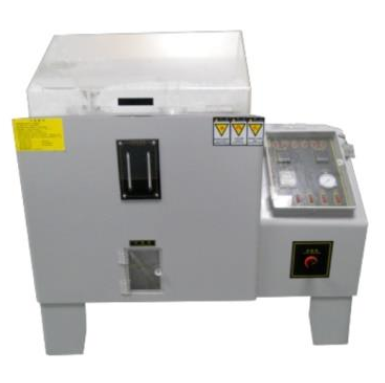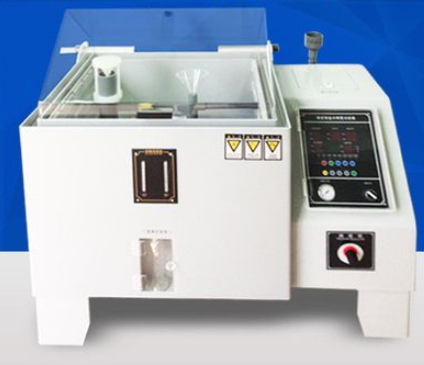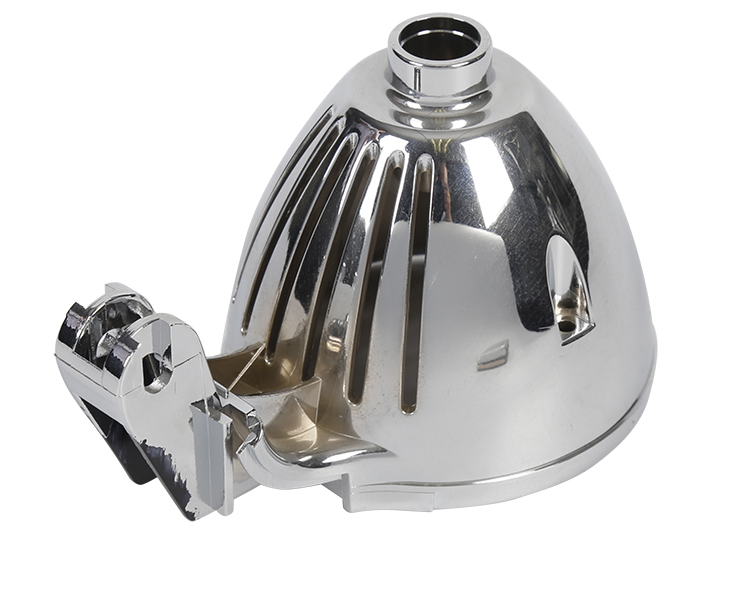Those who do surface treatment know that plating mainly plays a role in the decorative appearance and protects the substrate from corrosion. Today I will share with you to discuss the salt spray test for plated parts.
- The so-called salt spray corrosion
Corrosion is the destruction or deterioration of materials or their properties caused by the action of the environment. Most corrosion occurs in the atmospheric environment, which contains corrosive components and corrosive factors such as oxygen, humidity, temperature changes, and pollutants. Salt spray corrosion is a common and most destructive form of atmospheric corrosion. The salt spray spoken of here refers to a chlorinated atmosphere, whose main corrosive component is the chloride salt of the sea – sodium chloride – which is mainly sourced from the sea and saline areas of the interior.
Salt spray corrosion of the surface of metal materials is caused by the chloride ions contained penetrating the oxidation layer and protective layer of the metal surface and the electrochemical reaction of the internal metal. At the same time, chloride ions contain a certain amount of hydration energy, easy to be adsorbed in the metal surface of the pores, cracks to crowd out and replace the oxygen in the chloride layer, the insoluble oxide into soluble chloride, so that the passivated state of the surface into an active surface. This causes an extremely bad reaction to the product.
- The salt spray test and the link to practice

The salt spray test is an environmental test that uses artificially simulated salt spray environmental conditions created by salt spray test equipment to assess the corrosion resistance of products or metal materials. It is divided into two main categories, one for natural environmental exposure tests and the other for artificially accelerated simulated salt spray environmental tests. Artificially simulated salt spray environment test is the use of a certain volume of space test equipment – salt spray test box, in its volume of space with artificial methods, resulting in salt spray environment to assess the quality of the product’s salt spray corrosion resistance.
It is compared with the natural environment, the salt concentration of chloride in its salt spray environment can be several times or dozens of times the salt spray content of the general natural environment so that the corrosion rate is greatly increased, the salt spray test on the product, the time to produce results is also greatly shortened. Such as in the natural exposure to the environment of a product sample test, to be its corrosion may take 1 year, while in the artificial simulation of salt spray environmental conditions test, as long as 24 hours, you can get similar results.
- Artificially simulated salt spray tests include
1) Neutral salt spray test (NSS test) is one of the earliest and most widely used accelerated corrosion test methods. It uses 5% sodium chloride brine solution, the solution PH value adjusted in the neutral range (6 ~ 7) as the spray with the solution. The test temperature is taken as 35 ℃, the required settlement rate of salt spray in 1 ~ 2ml / 80cm².h between.
2) The acetate mist test (ASS test) was developed on the basis of the neutral salt spray test. It is in the 5% sodium chloride solution with some glacial acetic acid, so that the solution PH value down to about 3, the solution becomes acidic, the final formation of salt spray also from the neutral salt spray into acidic. It is about 3 times faster than the NSS test in terms of corrosion rate.
3) copper salt accelerated acetate fog test (CASS test) is a newly developed foreign rapid salt spray corrosion test, with test temperature of 50 ℃, the salt solution with a small amount of copper salt – copper chloride, strongly induced corrosion. Its corrosion rate is about 8 times that of the NSS test.

- Salt spray test standards and the determination of test results
A. The standard is a uniform provision made for repeatable things and outlined. The salt spray test standard is the salt spray test conditions, such as temperature, humidity, sodium chloride solution concentration, and PH value to do a clear and specific provision, in addition to the salt spray test chamber performance technical requirements. The same product uses the kind of salt spray test standards according to the characteristics of the salt spray test and the corrosion rate of the metal and the degree of sensitivity to salt spray selection.
B. The purpose of the salt spray test is to assess the quality of salt spray corrosion resistance of the product or metal material, and the salt spray test results are judged on the quality of the product, it is determined whether the results are correct and reasonable, is the correct measurement of the quality of the product or metal resistance to salt spray corrosion.
C. salt spray test results of the determination method are rating determination method, weighing determination method, the corrosion of the appearance of the determination method, corrosion data statistical analysis method.
1) rating judgment method is the corrosion area and the total area of the ratio of the percentage of a certain method into several levels, to a certain level as a qualified judgment basis, it is suitable for flat samples for evaluation;
2) weighing determination method is through the weight of the sample before and after the corrosion test weighing method, calculate the weight of the corrosion loss to the sample corrosion resistance quality assessment, it is particularly suitable for a metal corrosion resistance quality assessment;
3) Corrosion appears to determine the method is a qualitative determination method, it is to salt spray corrosion test, whether the product corrosion phenomenon to determine the sample, the general product standards are mostly used in this method; corrosion data statistical analysis method provides the design of corrosion tests, analysis of corrosion data, to determine the degree of confidence in the corrosion data, it is mainly used for analysis, statistical corrosion, rather than specifically for an It is mainly used for analysis and statistics of corrosion, but not specifically for the quality determination of a specific product.

